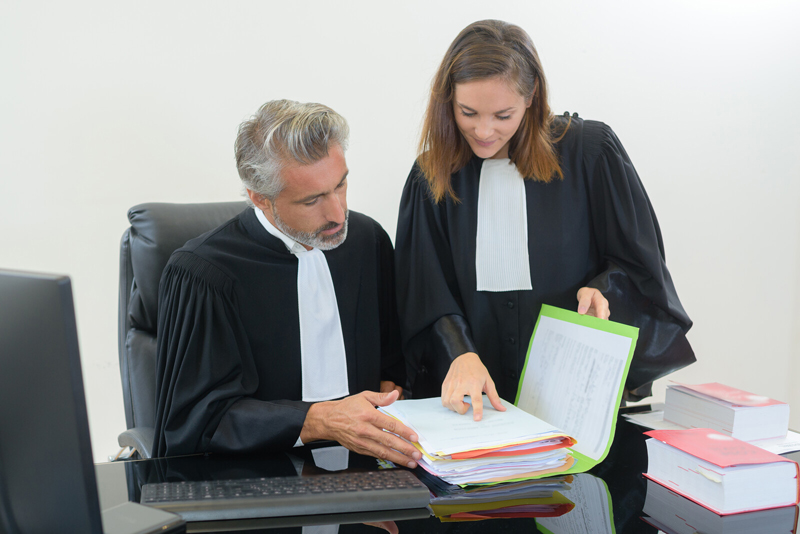Briefing is one of the most important skills that every attorney needs to master. A well-written brief is one that effectively highlights the key issues in the case, cites authority where needed, and presents the legal argument clearly. Legal briefs constitute a large proportion of the recordings created on a daily basis. As attorneys focus on crafting high quality briefs, they can rely on a digital transcription service provider specialized in legal transcription to document their oral arguments.
The basic elements of a legal brief include an introduction that presents the party’s claim, a Table of Authorities (TOA) section that lists the legal authority sources cited, a Statement of Facts that incorporates a description of facts in a persuasive way that addresses the legal issues in a case, an Argument section that covers the main arguments of law, and a Conclusion that summarizes and draws attention to the key issues.
Writing a concise and compelling legal brief is crucial to present the facts of the case effectively and makes a good first impression on the court. Here are 9 tips for effective legal writing:
- Keep the reader in mind: While the presiding judge will not read your brief in detail, the research attorney will. Legal readers are busy individuals who spend a lot of time conducting legal research and summarizing briefs. Make it easy for them to find what they want from your document.
- Present the main argument first: To create a good first impression, start off your strongest argument. Present the relevant facts in a credible and compelling manner. Don’t wait till you get to the arguments section to explain the main theme of the case – state it in the beginning and then tell the reader how you got there.
- Construct an effective legal argument: To create a valid argument, first identify the relevant legal issues and apply the law to the facts. Next, structure your answer clearly and logically using appropriate legal language. Be organized and present your arguments logically and in a fair and reasonable manner.
- Avoid complex legal technicalities: Too much legalese will make your brief difficult to follow. Use simple language. Examples of bombastic words and phrases to avoid include:
manifestly, clearly, fatal, clear beyond peradventure, logic that is fatally flawed, egregious, contumacious, mere gossamer, must necessarily fail, totally in apposite (www.aba.com). Experts say that even simple words like plaintiff, defendant, petitioner, respondent, cross-complainant and other procedural terms can be confusing. The ABA report recommends using real names after you identify the players with their legal labels. - Keep it brief: Keep your writing as simple and concise as possible. Avoid wordiness and too many points, citations, and quotations. Use effective nouns and verbs, and keep sentences short to make them easy to read and understand. On the other hand, varying sentence length is important to avoid monotony. Use your own judgment to determine how you can get your arguments across effectively.
- Use headings and subheadings: Briefs, like all other legal documents, can benefit from headings and subheadings. Single-word or short-phrase headings topic headings should be used to highlight the Argument, Discussion, and Statement of Facts. Explanatory heading or full-sentence headings and sub-headings can be used to break up a discussion or argument.
- Be professional: Stick to the facts, be objective, and concede the obvious. Avoid a sarcastic or caustic tone and don’t ridicule your opponent or their arguments in order to make your point. A good brief is about convincing the court about your side of the issue and that your opponent’s arguments are absurd – without actually saying so (www.digitalcommons.law.seattleu.edu). As an ABA article says, “Argue the case, not your feelings”.
- Use visuals: Images, graphs, charts, bullet points can transform briefs. Visuals help you get your point across more effectively than words. For example, maps are great for identifying exactly where important events unfolded. An Appellate Advocacy blog notes that judges appreciate handy visuals that break down the facts or arguments in the brief. But keep in mind that visuals should be used to complement the writing and not replace it.
- Use citations and quotations effectively: Legal writing is dependent on citations or references. To support your arguments, all statements of law in a brief must be supported by a citation to a case, rule, treatise, statute, constitutional provision, or other source. A 2019 working paper published by the UNC School of Law says that the best way to incorporate citations is to integrate them to the text to effectively convey information to a legal audience. Precise use of quotations and paraphrases can also make your paper easier to read and more persuasive. Some key tips: try to stick to block quotes of less than 50 words, avoid excessive use of quotes, and paraphrase wherever possible.
After you complete your brief, proofread and edit it. Make sure there are no spelling or grammatical mistakes and that the document complies with court guidelines on fonts, letter sizing, and margins. Professional transcription services are a practical option to maintain accurate records of court proceedings.




